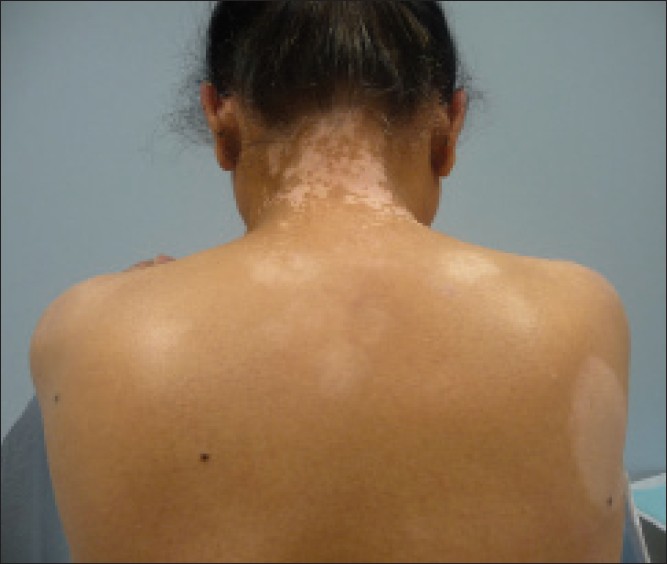Everything you need to Know About Hypopigmentation, Vitiligo and Surgery Options
Hypopigmentation of the skin is the appearance of lighter skin on certain parts of the body, or across the whole of the body. It can be caused by many factors, some external, and some genetic.
Hypopigmentation is a broad term, it is more of a descriptive term describing a change in the skin that can be seen in a number of different skin conditions.
What Gives Skin its Color?

Both human skin and that of other living beings obtains its coloration from biological pigments. Skin color in humans is predominantly defined by a grouping of pigments called “melanin.”
When high levels of melanin are produced the result is a pigmentation disorder called melanism, or significantly darker than average skin. Conversely, small amounts or no melanin at all causes the skin to become lighter, which is called hypopigmentation.
There are two key components to the production of melanin: tyrosine and melanocytes. Melanocystes are cells in the outer layer of skin that use the amino acid tyrosine to produce melanin pigment.
Hypopigmentation occurs when at least one of the three elements – tyrosine, melanocytes and melanin are lacking. The causes vary from inherited/ autoimmune diseases to injuries to the skin such as burns.
Another common manifestation of hypopigmentation is vitiligo. A person with vitiligo has areas on their body that appear much whiter than average.
While statistics on vitiligo vary greatly, it’s estimated that between 35 and 70 million people worldwide live with it.
“Vitiligo is an autoimmune disorder in which the body’s immune system attacks one’s own pigment producing cells, or melanocytes, and destroys them, resulting in depigmented patches on the skin,” says Evan. These depigmented patches vary widely in size and location from one person to another, but commonly occur in areas around the mouth, nose and eyes. Early graying or whitening of hair can also occur on affected areas.

Signs of vitiligo are not necessarily present at birth, and white patches generally begin to show before the age of 20, they can appear at any time. Vitiligo likely has a generic component to it, as there is evidence suggesting that it runs in families.
Hypopigmentation Treatments
In certain instances, hypopigmentation is treatable, such as thorugh the use of topical corticosteroids or other eczema topical agents for the treatment of Pityriasis Alba.
Other discolorations resulting from external factors can also be mitigated. “If there is loss of pigmentation due to an injury such as burns or chemical trauma, then the use of corticosteroids, light/ laser treatment, or surgical skin grafting may be recommended,” says Pirzada.
When there is a genetic component to hypopigmentation, altering its appearance is somewhat more difficult. For those who wish to change their appearance, options vary in cost, treatment and effectiveness.
“People do try to seek a remedy for this growing inherited disease but the treatment options are very limited,” says Pirzada. “If hypopigmentation is due to any inherited disease, the doctor amy prescribe topical gels. Also, successful treatments have been performed by skin specialists using pulsed light and laser therapy.”

If treatment is unresponsive or unavailable, masking the area outright is sometimes an option. “If these topical gels are unresponsive then camouflaging with cosmetic tattooing or permanent makeup may be the best option,” says Pizarda. “Topical medications, such as hydroquinone and other skin lightening drugs, can be used to bleach the skin not affected by hypopigmentation so it blends better with the rest of the body.”
Is Treatment Necessary?
Albinism, vitiligo, and other forms of hypopigmentation are often stigmatized by society. As the National Organization for Albinism and Hypopigmentation points out, people with more extreme forms of hypopigmentation are at risk of social isolation as these conditions are often misunderstood.
Today, many people choose to simply embrace their hypopigmentation and don’t try to treat or hide it. In popular culture, several people with hypopigmentation have been an inspiration and a voice for the community.


